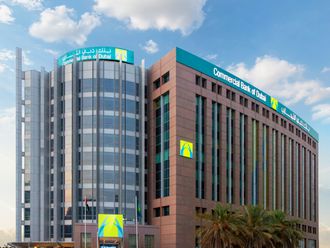One of the important economic measures I wrote about earlier this year was the Inflation Expectations Gauge. If the 10-year US break-even rate rises above 2.5 per cent, I said, the Federal Reserve might have to increase the pace of its rate hikes.
Over the following weeks, it looked ready to test that level. By mid-May, however, it was stalling at 2.2 per cent, and it almost fell back through 2 per cent at the start of June.
Last week, in line with expectations, the Federal Reserve hiked rates, freed itself from its “low-for-longer” forward guidance and lifted its “dot plot” a little higher. The European Central Bank also followed the script, confirming that it would end its quantitative easing purchases by the end of the year, subject to data supporting its inflation outlook — which it revised upwards. It is a good time to ask why markets have become so tentative in their inflation expectations, and what that implies about the length of this business cycle and the path of rates.
Where is inflation?
Realised inflation has indeed been weaker than expected so far this year.
Unemployment is at levels unseen since 2000 in the US, the early 1990s in Japan and 2007 in Europe. Commodity prices have been rising for 12 months. The business cycle seems to be maturing, with robust equity valuations and tight credit spreads, and yet the US has enacted a fiscal stimulus worth $280 billion (Dh1.03 trillion) in 2018 alone.
Against this backdrop, it is surprising that US core consumer price inflation (CPI) sits at just 2.0–2.2 per cent. The Fed’s favoured measure of inflation, year-over-year growth in core personal consumption expenditures (PCE), has risen from 1.5 per cent to 1.8 per cent but remains below its 2 per cent target. Inflation appears to have recovered from its dip last year, but does not register the full pressure that seems to be building beneath it.
Perhaps we should think again about that huge fiscal stimulus. A big chunk of it is coming in the form of tax cuts for corporations. Some of that windfall will be paid out in higher wages, dividends and share buy-backs — all potentially inflationary. However, first- and second-quarter reports suggest that at least a portion of it is being ploughed into capital expenditure — which is potentially disinflationary.
Capex and productivity
How can spending more be disinflationary? Investing in new machines and technology should improve productivity. Improved productivity means more economic output for the same number of hours worked, dollars paid in wages and raw materials purchased. That, in turn, gives the economy the capacity to grow just a little more without stoking inflation.
The official data tell us that productivity has been declining for years. But that is difficult to square with the steady growth and low inflation we have enjoyed for the past three decades.
“You can see the computer age everywhere but in the productivity statistics,” wrote Nobel laureate Robert Solow back in 1987, when 64K home computers were a novelty. Well, productivity growth is apparently even slower today, in the age of the smartphone.
Do our statistics fail to capture the impact of smartphones and artificial intelligence (AI) as clearly as they captured the impact of trains, trucks and intercontinental flight? Or is the surge in productivity just around the corner? Academics will continue to debate this puzzle. For investors, it is enough to recognise the correlation between technological advances and low inflation growth — and that the leaders in this year’s capex spending have been in the energy and technology sectors.
Keep checking that gauge
It is far too early to say that the investments made in the first half of this year have boosted productivity and taken the steam out of inflation. However, it is not too early to ask whether they might keep the lid on over the next 12-18 months. Notwithstanding the gentle nudge its new chairman gave us last week, well-behaved inflation would give the Fed some latitude to continue normalising rates and winding down its balance sheet while soothing markets with dovish forecasts and pronouncements.
Ultimately, that could extend this already long cycle even further. Some are already talking about a return to the ‘Goldilocks’ environment of 2017. We would not go that far, but it is good to remember that the economy can surprise us with its capacity for non-inflationary expansion. Keep checking that gauge.
Erik Knutzen is chief investment officer — Multi-Asset Class at Neuberger Berman.










